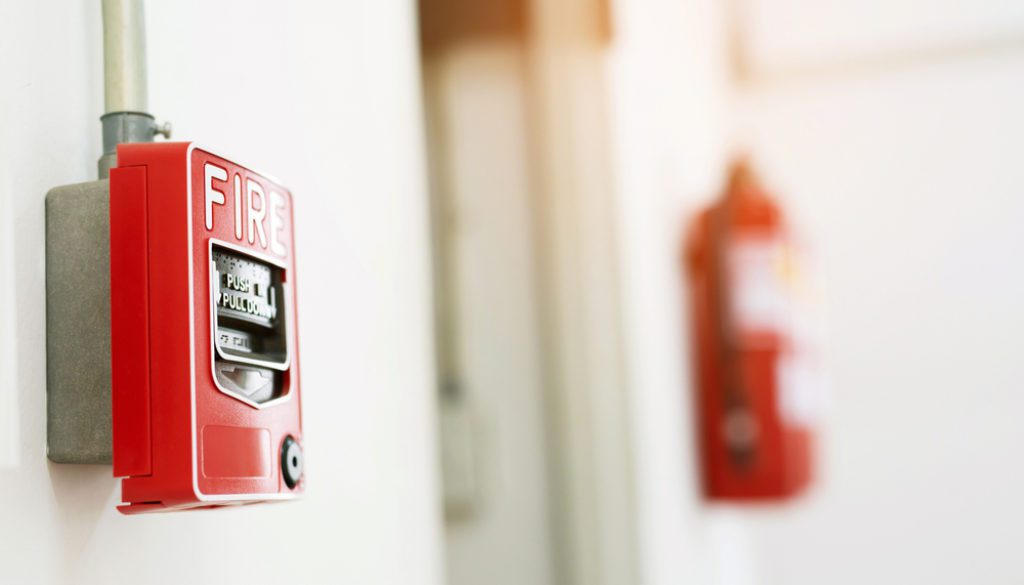August Safety Training: Fire Prevention
Fire prevention is one of the most well-known types of occupational safety training. Employees in most businesses, schools and hospitals are familiar with fire drills and safety presentations. But a monthly or yearly fire drill often isn’t enough to truly prepare people to effectively prevent and respond to this type of crisis. An optimal safety training plan must include additional topics: fire extinguisher use, first aid and emergency communication.
Fire risks and statistics
Fires are more common than many people believe. According to the National Safety Council, firefighters respond to a fire in the U.S. every 23 seconds. In 2021, there were over 1.3 million fires that caused 14,700 injuries and 3,800 deaths.
Fires can also cause catastrophic property damage. In 2021, fires (residential and work-related) caused over $44.2 billion in property loss. In that same year, there were 125,500 fires in non-residential structures and 658,500 fires in outdoor locations.
Explosions and fires in occupational settings cause over 5,000 injuries and 200 deaths each year. These events cost businesses over $2.3 billion per year in property damage.
There are many potential causes of fires; in non-residential building fires in 2020, cooking was the most common cause. Intentional fires were the second-most common. In the same year, there were 12,200 non-residential fires started unintentionally (e.g., via carelessness or negligence), and they caused $5.39 million in property loss.
Fire prevention safety training
Providing employees with clear response procedures increases safety and reduces the risk of loss during a fire.
- Prevention and safety: Provide all workers and students with a list of fire safety tips, such as using cooking appliances correctly, identifying fire hazards, keeping fire exits clear and using electronics properly. Check fire alarms, fire doors, sprinklers and extinguishers frequently to make sure they are working correctly.
- Response plans: Develop a thorough emergency plan for a fire so employees, students, staff members and incident administrators understand their unique roles. Make sure authorized individuals can access these plans even when they are off-site. Encourage all individuals to report a fire or fire hazard, and provide reliable tools for them to do so. Consider providing first aid training as well.
- Drills: Fire drills may have a reputation for being boring, but they are effective. During a drill, activate the fire alarm systems and make participants follow real evaluation routes to designated muster locations. Following a drill, incident managers may want to run an After Action Review to identify successful actions and areas for improvement.
- Recovery procedures: Ensure that managers and teachers know what to do following a fire. This may include verifying their team’s arrival at an evacuation location and directing them to return to work or go home. Make sure managers have reliable communication tools to maintain a connection with off-site employees.
Many organizations focus on preventing fires in their buildings, but it’s also important to prepare for wildfires. These natural disasters can severely impact schools, businesses, local government offices and healthcare institutions, so administrators should develop emergency plans for local wildfires.
Fire prevention training keeps people and property safe
Protecting buildings and workers from fires requires more than just regular fire drills. Organizations must develop comprehensive safety plans and training courses to mitigate the risks of work-related fires. Along with drills, which are required by law in many areas, administrators should provide training on fire prevention and recovery protocols.
Every second counts in a fire, so organizations need to ensure they can quickly alert personnel of an emergency. With critical communications solutions from Rave Mobile Safety, administrators can send multichannel (e.g., email, voice, social media and SMS text) emergency notifications to on-site and remote employees.
Our emergency communication systems can integrate with existing fire alarms and PA systems for optimal coverage. We also offer incident management tools that simplify collaboration between administrators, 9-1-1 and first responders. Following a crisis, managers can connect with workers via polls and status checks. To get more information on our customizable and prebuilt communication solutions, contact our team.





